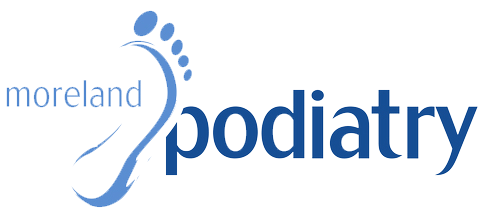What is normal for growing feet and children’s foot development?
Here are Moreland Podiatry, we offer Children’s Podiatry and are able to assess the health and development of your child’s feet. This is an important service as children’s bones are soft and their feet grow fairly quickly. Early intervention, should there be any issues, will help ensure the best outcome for strength and mobility in later life.
Is Barefoot Best?
As children’s feet grow, they need plenty of freedom for muscles to strengthen and bone to form – barefoot walking is a great way to ensure there are no restrictions on the developing foot. A baby’s foot is made up of cartilage – the bones develop over years and it is important to let feet develop naturally without being restricted by ill-fitting shoes. Shoes that don’t give little feet enough room can alter the development of the crucial muscles needed for walking and running. Walking barefoot allows children to strengthen the toes, ligaments and tendons. Of course, your child can’t be barefoot all the time and shoes are a necessity in protecting your child’s feet when out and about – investing in well-fitting shoes is crucial to the health of your child’s feet.
What to Look for in Children’s Shoes?
Shoes should be lightweight and comfortable. Check that the shoes are flexible with enough room for the toes. Leather or canvas are best in terms of fabric – they are breathable and can stretch. A smooth sole is best to ensure it doesn’t catch and trip your little one up. Try to avoid used/second-hand shoes as they would have already moulded to the foot of another child. It’s also best to avoid arch support unless prescribed by a Podiatrist – arch-support can interfere with natural arch development.
Developmental Milestones
The following are typical milestones in toddler development – if you have concerns about your child or if you’ve noticed a delay in reaching these milestones, please make an appointment to see us today.
12 months: can walk with assistance (using furniture for support)
15 months: can walk without assistance using a wide-based gait
18 months: can run without assistance still using a wide-based gait. If your toddler is not walking by 18 months, then you should book an appointment with one of our specialist Podiatrists
24 months: can walk up and down stairs – 2 feet per step. Falls and slips are common at this stage as your toddler’s coordination develops and they experiment with changing direction when running.
30 months: can jump off both feet – if your child cannot jump by school age, this may be cause for concern.
36 months: can balance on one foot for a short time and can climb stairs one foot at a time. A mature gait is established. If your child is still showing signs of tip-toe walking or balancing by protruding their belly, then please give our Podiatry Clinic in Brunswick West a call.
Other Common Complaints
Flat-feet – arches develop up to the age of 6. If your child seems unstable or in pain when walking, then you should come and see one of our Podiatrists for an assessment. Your child may benefit from orthotics in their shoes.
Knock Knees – knees are close together but ankles are apart. This usually corrects by age 7.
In-toeing – the feet point inwards. This usually corrects by the age of 8
Out-toeing – the feet point outwards. This usually corrects by the age of 8.
Tiptoe walking – walking on tiptoes is usual for children under 3
Moreland Podiatry: Specialist Children’s Podiatrists
If you have any concerns about your child’s growing feet, please book an appointment with us. If addressed early, many conditions can be successfully treated.




Recent Comments